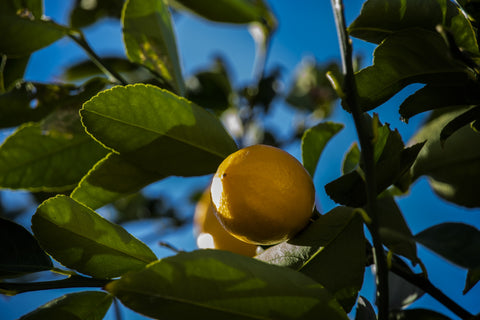Spring is here! And the warmer temperatures of spring mean that it's time to move many of your indoor plants back outside, especially some of your favorite fruits.
In fact, one of our most popular varieties, the Meyer Lemon Tree, loves to go back outside on nice, higher temperature days. Today, we'll tell you how to transition your most prized plant to the great outdoors.
Moving Meyer Lemon Trees Outdoors
First thing's first: Before moving your Meyer Lemon outside, keep in mind that they're pretty sensitive to changes in direct sunlight and changes to their watering schedule. But if you follow the simple steps below, the process is simple.
1. Mind the Weather: Wait until the temperatures outside stay above 40 to 50 degrees consistently before moving your Meyer Lemon Tree. And ensure the last frost has passed!
2. Gradual Transitioning: Your Meyer Lemon Tree needs to build tolerance to direct sunlight. To help the transition, give your tree an hour of direct sunlight during its first day outside, and then move it into a shaded area.Do this for about two weeks, slowly increasing the amount of time that the Meyer Lemon spends in the direct sunlight.
When Should You Water Meyer Lemon Trees?
3. Adjust the Watering Schedule: When the Meyer Lemon Tree is outdoors, it will need water a bit more frequently. That means you should pay attention to the rain because your tree may be getting enough water already!
So, when should you water your Meyer Lemon? Basically, the trick is to wait until your Meyer's soil is dry to the touch, about two inches below the surface.
4. Don’t Panic: Leaf drop and fruit drop are normal! When a Meyer Lemon Tree goes through this indoor-to-outdoor transition, it may drop its leaves and fruit to save energy. But this is a good sign because it means your tree is adjusting to its new environment.
How to Encourage Meyer Lemon Growth
5. Thin the Crop: Remove some of your smaller lemons so that your Meyer Tree will focus its energy on adjusting to the outdoors. The other lemons will eventually grow much larger as a result. Also, use a sterile pair of loppers or hand pruners, and cut the branches at a 45-degree angle, facing upwards, to promote new growth.

6. Fertilize: To boost new growth, it may be beneficial to fertilize in the early spring with a well-balanced or citrus-specific blend. Follow the instructions on the package, and you'll be ready to go.
7. Clear Weeds: Grass and weeds can steal the nutrients from your Meyer Lemon’s soil, so if you see any growing during the transition, pull them out - no weed killer required.
Now, you're well on your way to continued success with your Meyer Lemon. And there's nothing like Meyer Lemons of your own, growing year-round. If you don't have one already, though, check out more about our Meyer Lemon here! Growing your own Meyer Lemon couldn't be more effortless with our tips and tricks for care.





